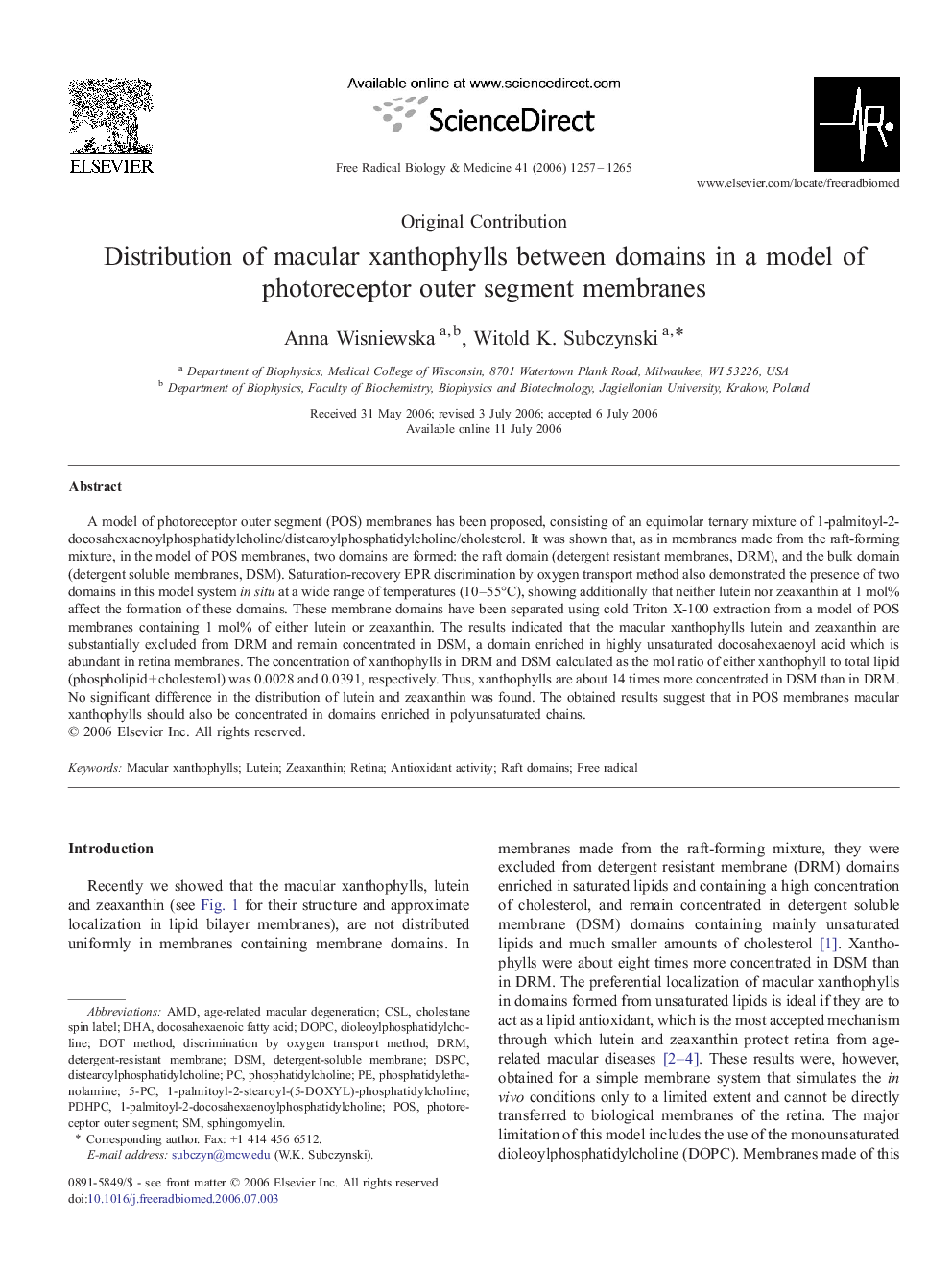| Article ID | Journal | Published Year | Pages | File Type |
|---|---|---|---|---|
| 1911389 | Free Radical Biology and Medicine | 2006 | 9 Pages |
Abstract
A model of photoreceptor outer segment (POS) membranes has been proposed, consisting of an equimolar ternary mixture of 1-palmitoyl-2-docosahexaenoylphosphatidylcholine/distearoylphosphatidylcholine/cholesterol. It was shown that, as in membranes made from the raft-forming mixture, in the model of POS membranes, two domains are formed: the raft domain (detergent resistant membranes, DRM), and the bulk domain (detergent soluble membranes, DSM). Saturation-recovery EPR discrimination by oxygen transport method also demonstrated the presence of two domains in this model system in situ at a wide range of temperatures (10-55°C), showing additionally that neither lutein nor zeaxanthin at 1 mol% affect the formation of these domains. These membrane domains have been separated using cold Triton X-100 extraction from a model of POS membranes containing 1 mol% of either lutein or zeaxanthin. The results indicated that the macular xanthophylls lutein and zeaxanthin are substantially excluded from DRM and remain concentrated in DSM, a domain enriched in highly unsaturated docosahexaenoyl acid which is abundant in retina membranes. The concentration of xanthophylls in DRM and DSM calculated as the mol ratio of either xanthophyll to total lipid (phospholipid + cholesterol) was 0.0028 and 0.0391, respectively. Thus, xanthophylls are about 14 times more concentrated in DSM than in DRM. No significant difference in the distribution of lutein and zeaxanthin was found. The obtained results suggest that in POS membranes macular xanthophylls should also be concentrated in domains enriched in polyunsaturated chains.
Keywords
Related Topics
Life Sciences
Biochemistry, Genetics and Molecular Biology
Ageing
Authors
Anna Wisniewska, Witold K. Subczynski,
